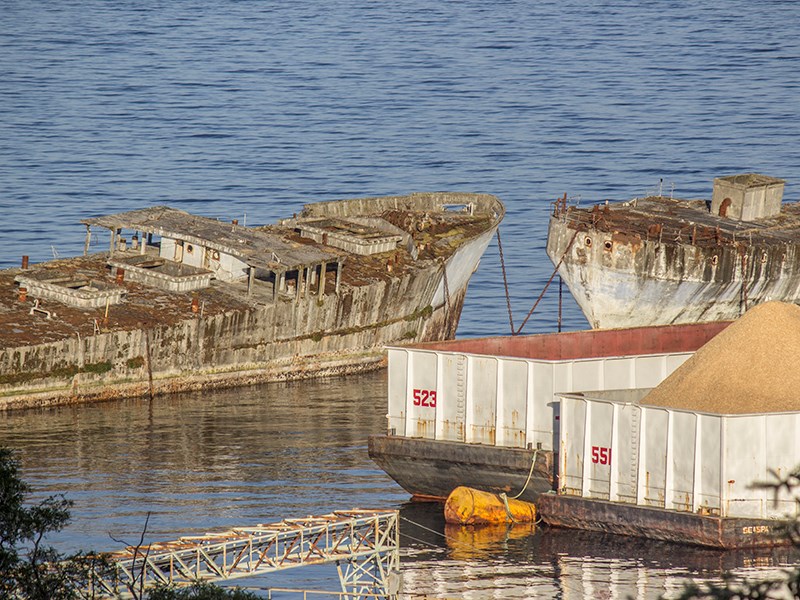Powell River’s iconic hulks will be attracting a new kind of attention of the underwater variety, said Fred Chinn, Powell River division vice-president and general manager for Catalyst Paper Corporation.
Chinn has been looking for support from local governments on the idea of sinking four of Catalyst’s concrete hulks in the near future to create an artificial reef near Willingdon Beach.
“[The hulks] have been there protecting our shoreline for many years,” said Chinn at a City of Powell River committee of the whole meeting on Tuesday, May 31. “We’re at a point now when [the mill’s] footprint has changed and we don’t really need 10; only six.”
Local divers say sinking one ship would be great for attracting more adventure tourism to the area, but four will make it world-class.
“It could do lots for this town,” said local dive shop owner Gary Lambeth.
Many outdoor attractions already put Powell River on the map, but when the four hulks are sunk a lot more divers and other tourists will come to the area, said Lambeth.
“The hulks will be interesting as they will be intact ships; we’ll be able to explore pretty thoroughly,” he said.
Last October, Chinn announced at a community stakeholder meeting that Catalyst would be looking at ways to reduce the number of ships in its breakwater. Chinn said he tried to sell them for a dollar to no avail. The unpowered vessels are not in good enough condition to handle being towed in open water, he added.
Chinn contacted Artificial Reef Society of BC (ARSBC) to inquire whether it would be possible to sink the ships near Powell River. ARSBC has been involved in the sinking of eight vessels off the BC coast, including an airplane, to create reefs. The association helped sink the old Canadian Navy destroyer HMCS Annapolis off of Gambier Island last April.
Chinn contacted local divers, including Lambeth, to help locate a suitable site near Powell River. After performing a number of survey dives, they found a barren spot of sea floor large enough to accommodate all four wrecks, and desert-like enough to meet government requirements, about halfway between Willingdon Beach and the mill.
“It’s a beautiful location to potentially put a ship down,” said Chinn. “Artificial reefs bring new marine habitat to the area, it’s not about just dropping a ship anywhere, because you can destroy a habitat if you put it where something active is going on.”
According to ARSBC, concrete is one of the best materials to use when creating artificial reefs.
The first hulk to be sunk will be YOGN 82, an American Navy World War II-era concrete gasoline barge currently docked at the mill after being damaged in a storm.
YOGN 82 will have its bow sitting at a depth of about 30 feet during low tide and be accessible to amateur divers, said Chinn.
The soonest Chinn expects to be able to go ahead with sinking the vessel is in October and he estimates it could take several years for the other three vessels to join YOGN 82.
“The permitting process is lengthy,” he added. There is much work to be done to prepare the ship to be sunk, he said. “The thing needs to be virtuously spotless.”
Before the project moves forward, Chinn said there are many requirements to meet and Catalyst plans to hold a public information meeting in Powell River with ARSBC available to answer any of the public’s questions.
“Once there are four wrecks down there it’s going to be spectacular and do all kinds of wonderful stuff for Powell River,” said Lambeth. “It’s super exciting.”



